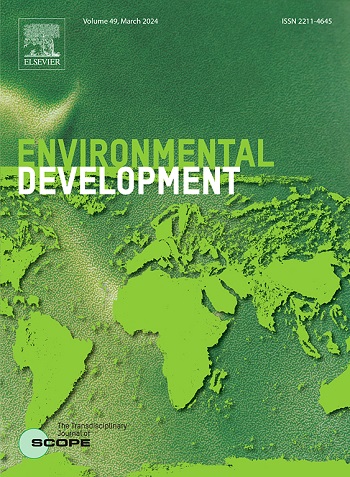模拟复杂森林景观未来变化的方法综述
IF 5.3
2区 环境科学与生态学
Q2 ENVIRONMENTAL SCIENCES
引用次数: 0
摘要
计算方法的某些方面可以用来模拟管理和自然景观的发展和变化,其中多个土地所有者群体的不同利益应该得到承认,这对建模者来说是一个挑战。使用与本主题相关的几个关键短语查询了四个书目数据库。存在一些合理的建模方法,通过抽样或统计模型或通过与土地所有者利益相关者沟通获得的知识来识别和模拟土地所有者的行为。关于空间范围和空间分辨率的假设直接关系到数据存储要求和模型适应所需模拟的能力。景观模型生成适合于比较备选方案的信息的敏捷性取决于搜索参数的灵活性和数据充分表示备选未来状态的能力。验证过程和统计测试用于支持模拟结果的可信度,因为根据所使用的数据和模型的开发方式,可能会出现错误和相关的不确定性(随机的和与过程相关的)。景观可持续性的现实建模可能需要综合自然过程和社会经济问题,尽管这种分析范围往往缺乏或有限。尽管景观变化建模有许多选择,但没有一个完美的模型可以解决所有潜在的未来情景,并且需要做出妥协,以解决预测结果中数据的准确性和固有的不确定性。本文章由计算机程序翻译,如有差异,请以英文原文为准。
Approaches for simulating alternative futures of complex forested landscapes: A review
Certain aspects of the computational methods that can be employed to simulate the development and change of managed and natural landscapes, where the disparate interests of multiple landowner groups should be recognized, are challenging for modelers. Four bibliographic databases were queried using several key phrases related to this topic. Reasonable modeling approaches exist that recognize and emulate landowner behavior through transition probabilities informed through sampling or statistical models, or through knowledge gained by communicating with landowner stakeholders. Assumptions regarding both spatial extent and spatial resolution relate directly to data storage requirements and the capacity of a model to accommodate the desired simulations. The agility of a landscape model to produce information suitable for comparing alternative scenarios depends on the flexibility of search parameters and the capability of the data to adequately represent alternative future states. Verification processes and statistical tests are used to support the credibility of simulated outcomes, as errors and associated uncertainty (random and process-related) can arise based on the data employed and how models are developed. Realistic modeling of landscape sustainability may require integration of natural processes and socio-economic concerns, although often this scope of analysis is lacking or limited. Although there are many options for modeling landscape change, there is no perfect model for addressing all potential future scenarios, and compromises will be made to address the accuracy of data and uncertainty inherent in projected outcomes.
求助全文
通过发布文献求助,成功后即可免费获取论文全文。
去求助
来源期刊

Environmental Development
Social Sciences-Geography, Planning and Development
CiteScore
8.40
自引率
1.90%
发文量
62
审稿时长
74 days
期刊介绍:
Environmental Development provides a future oriented, pro-active, authoritative source of information and learning for researchers, postgraduate students, policymakers, and managers, and bridges the gap between fundamental research and the application in management and policy practices. It stimulates the exchange and coupling of traditional scientific knowledge on the environment, with the experiential knowledge among decision makers and other stakeholders and also connects natural sciences and social and behavioral sciences. Environmental Development includes and promotes scientific work from the non-western world, and also strengthens the collaboration between the developed and developing world. Further it links environmental research to broader issues of economic and social-cultural developments, and is intended to shorten the delays between research and publication, while ensuring thorough peer review. Environmental Development also creates a forum for transnational communication, discussion and global action.
Environmental Development is open to a broad range of disciplines and authors. The journal welcomes, in particular, contributions from a younger generation of researchers, and papers expanding the frontiers of environmental sciences, pointing at new directions and innovative answers.
All submissions to Environmental Development are reviewed using the general criteria of quality, originality, precision, importance of topic and insights, clarity of exposition, which are in keeping with the journal''s aims and scope.
 求助内容:
求助内容: 应助结果提醒方式:
应助结果提醒方式:


